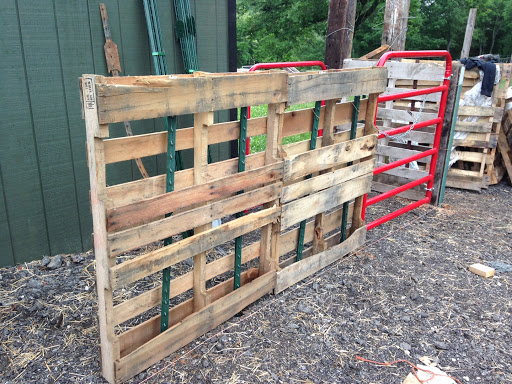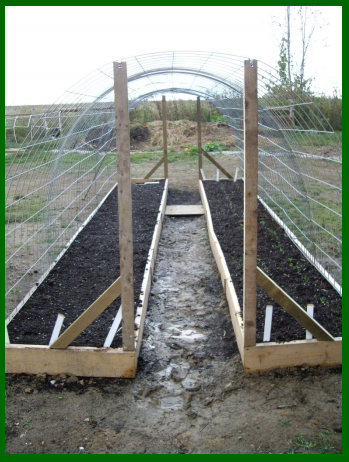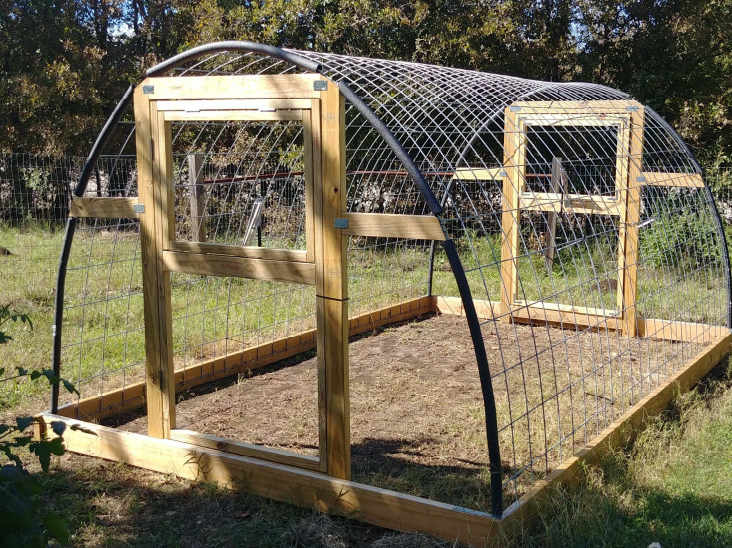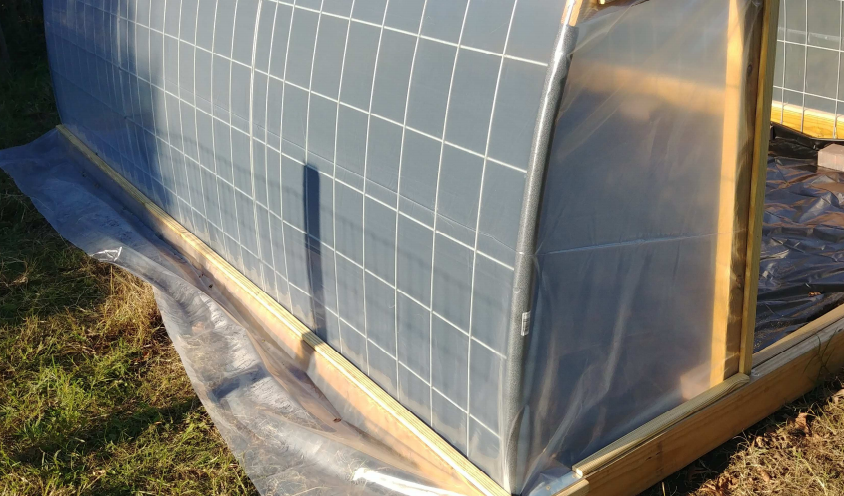on
Cattle panels are a heavy gauge galvanized welded wire fencing material that are typically 50″ x 16′ with varied spacing. There is a shorter version called “hog panels”. There is also a horse version with uniform 2″x 4″ spacing and a goat version with 4″x 4″ spacing, both of which are more expensive given the larger amount of metal involved. However, all you really need is a standard cattle panel that in most areas costs between $20-$25.
Their stiffness is what makes them ideal for building simple hoop houses. They can be staked directly into the ground, or added to raised sides. And the covering material can be greenhouse plastic or just a sturdy farm tarp depending on how you wish to use the finished product.
Figuring out the width of your building
A typical hoop house is going to be 7 – 13” wide, depending on a few factors:
- What are you building the hoop house for? Do you intend to have sides on your building, or are you going to stake the panels directly into the ground?
- How tall do you want the center of your hoop to be? While you don’t want to have to duck to move about the interior of your hoop house, you may not need it to be 8′ tall in the center.
- If a 7ft headspace in the center is enough for you here are some widths you can use:
- 16ft panel – no side walls – set panel base at 7’4″ wide
- 16ft panel with 2 ft side walls – set panel base at 10′ 2″ wide
- 16 ft panel with 4ft side walls – set panel base at 13.5′ wide
If you need something taller than obviously, you will want sides that are closer together so that the cattle panels will have more of an upright bow.
If you want sidewalls and are wanting to plant into the ground consider using the clear corrugated roofing panels so that you have light all the way to the ground.
If you are building a shelter for livestock, wood, equipment, etc… and it doesn’t need to be draft-free you can go the quick and cheap route of driving t-posts into the ground and slide pallets over them to make stable sidewalls. Make sure the t-posts are pounded in far enough that the tops don’t stick out over the wood.

Building a cattle panel ‘greenhouse’
Cattle panels are 16ft long and 50″ wide so how long you want your greenhouse to be is how many panels you will need.
Step 1: Choose and level the spot for your cattle panel greenhouse.
Step 2: Lay out your base, pressure-treated 2×6 are ideal for this and you will want enough of them to go around the base. You can also get fancy and pour concrete footers but it isn’t necessary.
Step 3: Frame out your end walls. You will want a door on one end and a door and/or window on the other for ventilation. The method of framing is your choice and the examples are quite varied.

Step 4: Attach your cattle panels to your frame using fencing staples. Be sure to bend your panels so that the soother side is towards the plastic, this will cut down on friction and the possibility of tearing a hole.
Step 5: Attach the cattle panels together using zip ties or baling wire, try to make it as smooth as possible. You will need to put pipe insulation over the edges at the ends and possibly at every junction in the panels. Pipe insulation keeps the plastic from rubbing going over the end edges.

Step 6: Cover with your greenhouse rated plastic. You want to get a minimum of 4ml thickness, although if you live in a windy area than the thicker 6ml plastic is what you want. Make sure it is UV rated so that it will last for more than just one season. Definitely a good idea to have a helper or two for this part. Secure it base on the outside of the wood using lath strips or old garden house to help secure it across the entire length.

And there you have it, a quick and simple season extending building for your garden, or a run for your chickens, shelter for your livestock, firewood or equipment. Hoop houses are an incredibly versatile and low cost homestead building options.
Want to see one being built from start to finish? There are lots of videos on YouTube, but here is one I enjoyed watching.
The one thing I would do differently (and pictured under step 6) would be to use a strip of lath or 1×2 to sandwich the plastic. It will hold so much better in the wind. Some people even roll the plastic at least one time around the 1×2 strip as an added precaution against the wind.
Get access to premium content and more!




